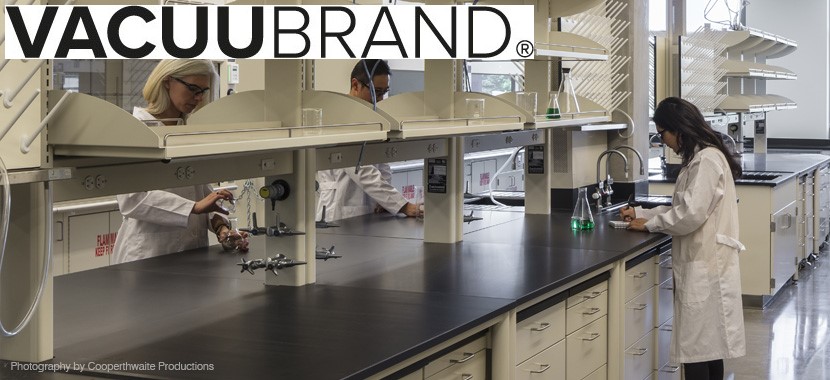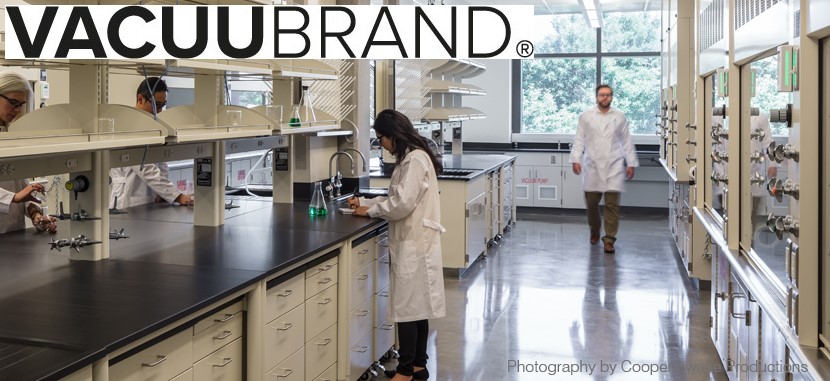Displaying 3 Live course(s).
.jpg)
In this course, we will discuss vacuum supply strategies while considering the range of applications for scientific vacuum in academic and industrial ...

Modern lab facilities have evolved to be more flexible, adaptable, and sustainable. They are safer for occupants to work in, and more economical to op...

Modern lab facilities have evolved to be more flexible, adaptable, and sustainable. They are safer for occupants to work in, and more economical to op...
Scan this code with your mobile device camera to take this page on-the-go!

https://redirect.aecdaily.com/s579160/www.aecdaily.com/course/1001586
 In this course, we will discuss vacuum supply strategies while considering the range of applications for scientific vacuum in academic and industrial lab facilities, and the implications of these requirements during programming, design, and construction. Of the strategies considered, the local vacuum network concept will be considered in detail.
We will discuss how the vacuum options employed can improve sustainability by reducing energy consumption, mitigating chemical vapor emissions, and eliminating waste water and oil.
We will review example installations which benchmark the scientific benefits, sustainability benefits, and health/safety benefits which are achievable with vacuum equipment chosen to suit owner needs.
In this course, we will discuss vacuum supply strategies while considering the range of applications for scientific vacuum in academic and industrial lab facilities, and the implications of these requirements during programming, design, and construction. Of the strategies considered, the local vacuum network concept will be considered in detail.
We will discuss how the vacuum options employed can improve sustainability by reducing energy consumption, mitigating chemical vapor emissions, and eliminating waste water and oil.
We will review example installations which benchmark the scientific benefits, sustainability benefits, and health/safety benefits which are achievable with vacuum equipment chosen to suit owner needs.
There doesn't seem to be any scheduled live events for this course. REQUEST one at a convenient time and location for you.
Scan this code with your mobile device camera to take this page on-the-go!

https://redirect.aecdaily.com/s579160/www.aecdaily.com/course/1001648
 Modern lab facilities have evolved to be more flexible, adaptable, and sustainable. They are safer for occupants to work in, and more economical to operate. Building systems have evolved to support these needs, and to support scientific advancement by delivering greater capability and performance. And modern science facilities have more diverse occupants with diverse needs of the spaces they occupy. There are wet labs and dry labs, of course. But also offices, collaboration spaces, dining areas, and even on-site amenities like exercise spaces and relaxation spaces that, in total, seek to maximize the health and happiness of the occupants - and thus maximize the productivity of those occupants.
With lower lab density in many modern designs, in particular lower wet lab density, modular lab utilities often provide more economical and sustainable solutions for building owners, while providing scientists with better quality tools to support their research. Local vacuum networks are an example of this - they are economical and sustainable systems which deliver deep, stable, high-quality vacuum to lab buildings by taking a modular, yet scalable, approach for virtually any lab.
This course will focus on the ways that lab vacuum is supplied to research and teaching labs within multi-use science facilities. We will compare a variety of different supply options, with a focus on local vacuum networks with respect to the components used as well as design and project execution considerations. Brief case studies of representative installations will be used to highlight these strategies in science facilities and the design and performance trade-offs involved.
Modern lab facilities have evolved to be more flexible, adaptable, and sustainable. They are safer for occupants to work in, and more economical to operate. Building systems have evolved to support these needs, and to support scientific advancement by delivering greater capability and performance. And modern science facilities have more diverse occupants with diverse needs of the spaces they occupy. There are wet labs and dry labs, of course. But also offices, collaboration spaces, dining areas, and even on-site amenities like exercise spaces and relaxation spaces that, in total, seek to maximize the health and happiness of the occupants - and thus maximize the productivity of those occupants.
With lower lab density in many modern designs, in particular lower wet lab density, modular lab utilities often provide more economical and sustainable solutions for building owners, while providing scientists with better quality tools to support their research. Local vacuum networks are an example of this - they are economical and sustainable systems which deliver deep, stable, high-quality vacuum to lab buildings by taking a modular, yet scalable, approach for virtually any lab.
This course will focus on the ways that lab vacuum is supplied to research and teaching labs within multi-use science facilities. We will compare a variety of different supply options, with a focus on local vacuum networks with respect to the components used as well as design and project execution considerations. Brief case studies of representative installations will be used to highlight these strategies in science facilities and the design and performance trade-offs involved.
There doesn't seem to be any scheduled live events for this course. REQUEST one at a convenient time and location for you.
Scan this code with your mobile device camera to take this page on-the-go!

https://redirect.aecdaily.com/s579160/www.aecdaily.com/course/1001619
 Modern lab facilities have evolved to be more flexible, adaptable, and sustainable. They are safer for occupants to work in, and more economical to operate. Building systems have evolved to support these needs, and to support scientific advancement by delivering greater capability and performance. This is true of building utilities in general, and specifically true of building vacuum systems. Local vacuum networks are economical and sustainable systems which deliver deep, stable, high-quality vacuum to lab buildings by taking a modular, yet scalable, approach. This course will compare local vacuum networks against central vacuum systems with respect to the components used as well as design and project execution considerations. Brief case studies of representative installations will be used to highlight the suitability of this strategy for building-wide vacuum supply.
Modern lab facilities have evolved to be more flexible, adaptable, and sustainable. They are safer for occupants to work in, and more economical to operate. Building systems have evolved to support these needs, and to support scientific advancement by delivering greater capability and performance. This is true of building utilities in general, and specifically true of building vacuum systems. Local vacuum networks are economical and sustainable systems which deliver deep, stable, high-quality vacuum to lab buildings by taking a modular, yet scalable, approach. This course will compare local vacuum networks against central vacuum systems with respect to the components used as well as design and project execution considerations. Brief case studies of representative installations will be used to highlight the suitability of this strategy for building-wide vacuum supply.
| Date & Time | Location | Contact | |
|---|---|---|---|
| Thursday, December 12, 2024 at 11:00 EST (UTC-05:00) | Webinar | Mat Carignan |
Displaying 3 Live course(s).